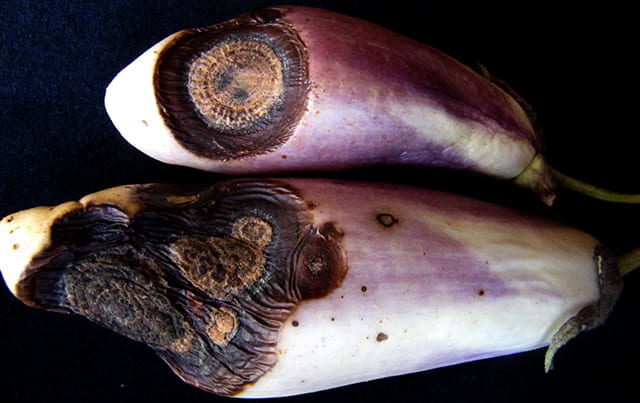Anthracnose is the most prevalent fruit rot of eggplant and also tomato and pepper. Rain provides favorable conditions for splash dispersing the pathogen as well as for infection, and harvest delays due to rain increase opportunity for anthracnose to develop. Ripe and overripe fruit are especially susceptible but this pathogen can infect immature fruit with symptoms not developing until fruit begin to ripen.
Spots on fruit initially are small, circular, and depressed. They can enlarge considerably over time with masses of pink to orange colored spores developing. Eventually the entire fruit will rot. Fruit nearest to the ground are most likely to be affected.
To manage anthracnose do not grow eggplant or other Solanaceous plants in the same area for 3 to 4 years, plant treated seed that was tested for the pathogen, cover the ground with black plastic mulch or other material to provide a barrier between the pathogen in the soil and fruit, use drip irrigation, apply fungicides, and pick fruit as soon as it is ripe.
Fungicide applications are recommended starting at first fruit set and are most important as the fruit ripens. See Anthracnose on Pepper for information about fungicides.





